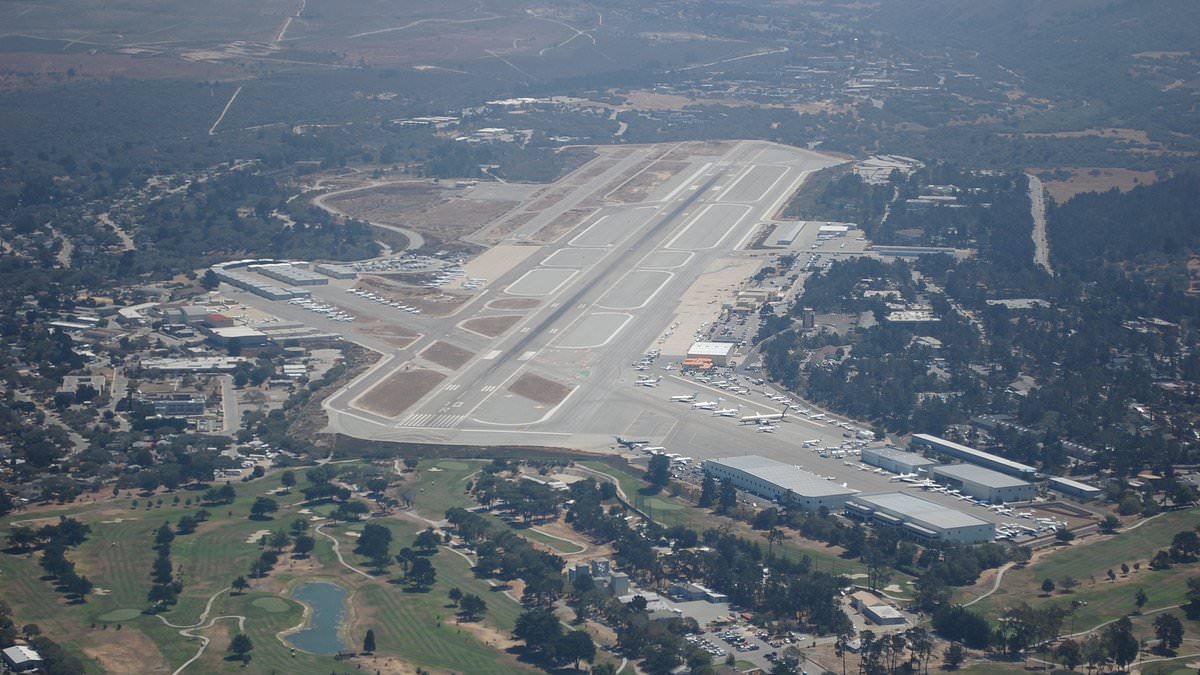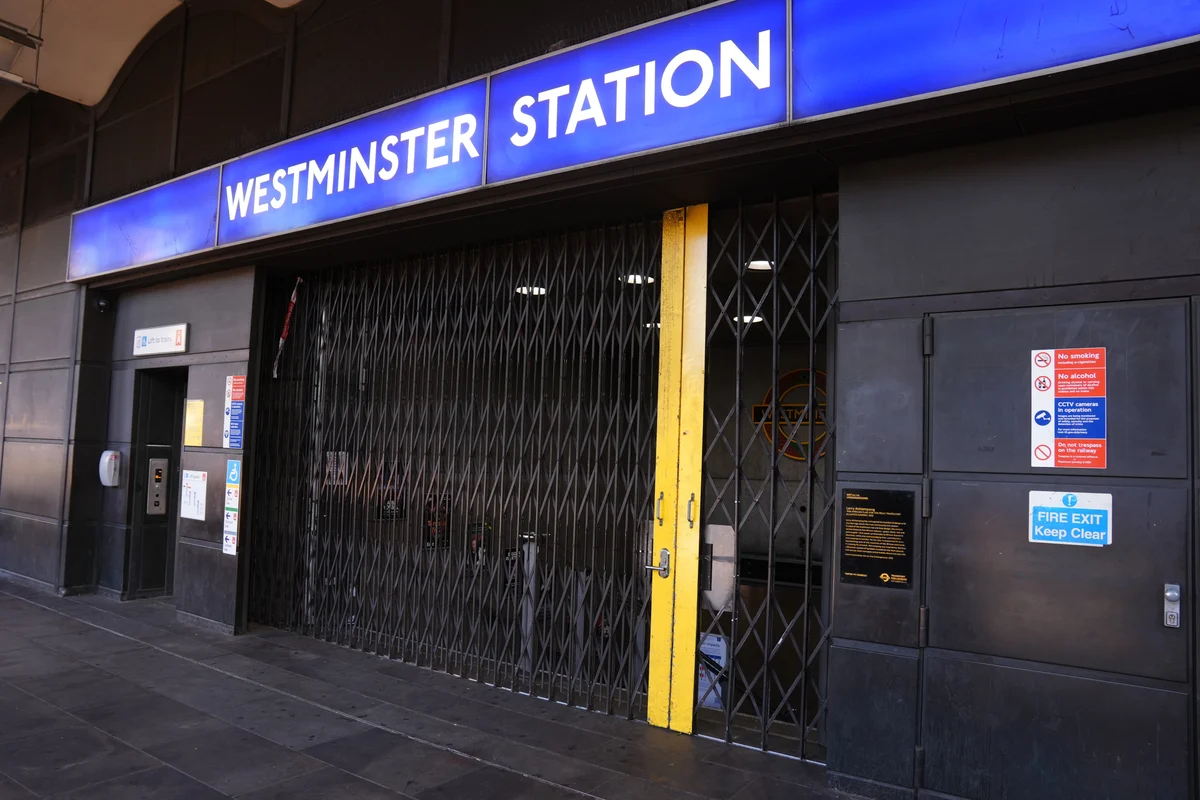All-out war erupts as neighbors threaten to sue busy California airport disrupting their peace and quiet
By Editor,James Gordon
Copyright dailymail

Residents in one of California’s most scenic coastal communities are threatening legal action against their local airport, accusing officials of turning a once-sleepy facility into a non-stop aerial menace that’s wrecking their quality of life.
At the center of the storm is Monterey Regional Airport (MRY), a modest, single-terminal airport that has seen explosive growth in both commercial and private air traffic since the pandemic.
Now, with over 160 aircraft movements a day, fed-up neighbors say they’ve had enough and are preparing to take the airport district to court if it votes later this month to repeal long-forgotten, decades-old noise and safety ordinances they believe are still enforceable.
The final vote on whether to formally eliminate the ordinances is set for September 17. Residents say if that vote goes through, they’re ready to sue.
‘We’re not a proper place for an airport,’ said longtime resident Nancy Runyon, who lives in a 1920s bungalow four miles from MRY.
‘A few planes, no big deal. But constant noise – this is driving people crazy,’ she told SFGate.
Runyon is part of the Monterey Fly Safe Coalition, a neighborhood group that formed in late 2023 in response to what residents call a ‘seismic shift’ in airport activity.
What was once marketed as ‘America’s most convenient airport’, a quiet regional airport with a handful of daily flights has, in their view, morphed into an aspiring major hub.
The airport is now generating near-constant jet noise, including during overnight hours and early mornings.
The group’s looming legal threat centers on three ordinances passed in 1978 and 1979 by the Monterey Peninsula Airport District.
Through public records requests, residents discovered that the ordinances had never been repealed, and they appear to regulate the airports’ operating hours, aircraft altitude over residential areas and touch-and-go practice landings, often used in pilot training.
Despite their existence, the airport never enforced them and now the board is looking to erase them entirely claiming the ordinances are preempted by federal aviation law and could expose the district to legal liabilities if they remain on the books.
‘We’ve never enforced these ordinances,’ said Carl Miller, chair of the airport board, in an interview with SFGate. ‘From the first day they were enacted, we were never authorized to [enforce them] by the FAA.’
But the residents aren’t backing down.
They say the airport is now violating the spirit of its own history and has prioritized expansion and profit over public safety and peace.
‘If you read the three ordinances, [the airport’s] been bothering people for 50 years,’ Runyon said.
Airport officials say the recent growth is real, and here to stay and some residents are blunt with their thoughts.
‘The airport was there first. The neighbors can all learn to live with it or move,’ wrote Dave Strang online.
Passenger numbers hovered around 200,000 per year from 2014 to 2019. But since 2021, that number has soared to over 300,000, a 50 percent increase.
The surge has been fueled by post-pandemic travel demand and an uptick in private jet traffic, which uses the airport for easy access to nearby golf resorts, luxury hotels, and coastal enclaves.
While MRY averages about 14 commercial flights per day, it’s the additional 140+ general aviation flights, including small planes, charters, and private jets, that residents say are making life miserable.
‘That’s one aircraft every six minutes or so,’ said airport Commissioner Jonathan Ahmadi, who was elected in 2023 on a platform that included addressing noise complaints.
‘Some of these aircraft sound like a loud leaf blower to some residents. I don’t think anyone feels like a good neighbor if someone is starting up a leaf blower at 5am.’
Many neighbors blame the shift on the FAA’s Next Generation Air Transportation System (NextGen), a federal initiative launched in the mid-2010s to increase flight efficiency by creating narrow ‘air highways’ over residential areas.
‘Before 2015, the planes came in and I didn’t notice I was in a flight path,’ Runyon said. ‘The FAA said, “We’ve got to get on plane freeways.” And they all are told to come in directly over my house.’
Residents say NextGen effectively rerouted flight traffic to cut straight over once-quiet neighborhoods, turning the natural sounds of surf and seabirds into an endless rumble of jet engines.
While some board members sympathize with residents, others argue their hands are tied by federal regulations.
Ahmadi, despite supporting neighborhood concerns, voted to repeal the ordinances himself.
‘As a principle of good governance, we shouldn’t have laws on the books that are illegal, unconstitutional, superseded, or can’t be enforced,’ he said.
‘If you have something on the books and aren’t enforcing it, you can be sued for that too.’
Ahmadi added that residents still have options, including filing formal FAA rulemaking petitions, which can request changes to flight patterns, operating hours, or altitude minimums.
The attorney representing the Monterey Fly Safe Coalition has experience filing such petitions on behalf of Malibu, which faced similar issues with private jet traffic.
The board already voted once in July to repeal the ordinances. The September vote will be the final step. But Runyon and her group have made it clear that if the repeal passes, they’re going to court.
In a letter sent August 18, the group’s attorney warned the board that ‘the District should not expose itself to litigation risk, grant enforcement actions, or yet another loss of credibility with the community it serves.’
Chairman Carl Miller maintains that the board has listened, held meetings, and taken concerns seriously.
‘We’re sympathetic,’ he said. ‘But we can’t control what’s in the air.’
He also pushed back on the idea that Monterey has a severe noise problem.
‘We have like 14 daily [commercial] flights,’ Miller said. ‘I know some of your readers up in San Francisco would love to have the problem we have.’
But for locals like Runyon, it’s not just the number of planes but their trajectory, timing, and tone.
‘They’ve killed the golden goose with all the greed,’ she concluded.



